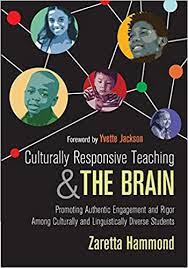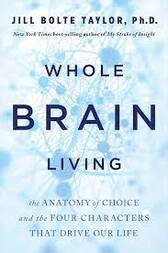Author: Erin Meyer
ISBN-10: 1610392507
ISBN-13: 978-1610392501
APA Style Citation
Meyer, E. (2014). The culture map: Breaking through the invisible boundaries of global business. New York, NY: PublicAffairs.
Buy This Book
https://www.amazon.com/Culture-Map-Breaking-Invisible-Boundaries/dp/1610392507/ref=asc_df_1610392507/?tag=hyprod-20&linkCode=df0&hvadid=312006100296&hvpos=&hvnetw=g&hvrand=16864645460974634994&hvpone=&hvptwo=&hvqmt=&hvdev=c&hvdvcmdl=&hvlocint=&hvlocphy=9018727&hvtargid=pla-406163964393&psc=1
| culture_map_activity.pdf |
Looking at culture is not always easy and it can be challenging to hear cultural stereotypes about one’s own culture. Stereotypes are also problematic as they can lead to bias and discrimination. There are individual differences in every culture and it is important to not make assumptions about individual traits based on where individuals are from. However, assuming culture doesn’t matter is also problematic. Cultural stereotypes can help reduce our cognitive load. Being aware of cultural differences can improve communication and effectiveness, especially for those involved in international business. In "The Culture Map", author Erin Meyer shares eight scales that map the world’s cultures and helps create a better understanding of how each culture functions. It is important to note that each graph provides norms for a culture, but individual differences are still important to consider. Individuals can map their own culture on these graphs, and then compare and relate to other cultures.
The first scale is about communication. Cultures are classified as having either low-context or high-context communication. Cultures with low-context communication, such as the United States, assume a low level of shared context and want simple and clear communication. Messages are accepted at face value and repetition is valued. Cultures with high-context communication, such as Iran, assume a high level of shared context and do not need explicit communication. Individuals often read between the lines and messages are implied. This difference in communication could be especially important when emailing.
The second scale is about evaluating performance and providing feedback. Cultures are classified as either providing direct or indirect evaluation. Cultures that provide direct negative feedback, such as Germany, often upgrade by providing stronger words before or after feedback, such as “absolutely” or “totally.” Negative feedback is blunt and honest and may be given in front of others. Cultures that provide indirect feedback, such as Thailand, often downgrade, by providing words that soften the criticism, such as a “little” or “maybe.” American culture is in the middle of the scale. Stereotypes about how a culture speaks is often associated with their position on the communication scale as opposed to the evaluation scale. When working with other cultures it is important to take into consideration their position on both the communication and evaluation scales.
The third scale is about persuasion. Cultures are classified as either principle-first (deductive reasoning) or applications-first (inductive reasoning). Cultures that use deductive reasoning, such as France, often begin with facts and later support or explain the conclusion as necessary. The preference for a business meeting might be to start with a summary and discussions are practical and concrete in nature. Individuals may want to know why the boss is making a request before moving on. Cultures that use inductive reasoning, such as the United States, often begin with the theory before the facts. The preference for a business meeting would be to start with a theoretical argument before reaching a conclusion. Individuals focus less on the why and more on the how.
The fourth scale is about leadership, hierarchy, and power. The leading scale classifies cultures as either egalitarian (lower power) or hierarchal (high power). In egalitarian cultures, such as Denmark, the distance between a boss and their employee is low and the boss is seen as equal. Communication often skips the hierarchy. The boss riding a bike to work may symbolize equality. Many cultures claim to prefer egalitarian, but evidence suggests the opposite. In hierarchal cultures, such as China, the distance between a boss and their employee is high. The boss leads from the front and status is valued. Communication follows a hierarchy. The boss riding a bike to work may cause embarrassment. Americans believe they are egalitarian but often fall more in the middle of the scale.
The fifth scale is about decision making. Cultures are classified as either consensual or top-down. Consensual countries, such as Germany, make unanimous group decisions. Top-down countries, such as Nigeria, have decisions made by individuals who are in a position of power. Many cultures that are egalitarian are also consensual decision-makers. The American culture is more of an outlier because it combines egalitarian leadership with top-down decision making. Germany is also an outlier combining hierarchal leadership with consensual decision making. Japan is even more unique with strong hierarchal leadership and very strong consensual decision making.
The sixth scale is about trust. Cultures are classified as either task-based or relationship-based. Task-based countries, such as the United States, build trust through business-related activities. Work relationships are quickly formed and easily broken. Personal relationships do not impact business interactions because “business is business.” Relationship-based countries, such as Brazil, build trust through sharing meals and meeting in communal areas. Work relationships form slowly and on a deeper level. Personal relationships enhance business interactions because “business is personal.” American culture can be tricky to understand on this scale. There are team-building activities and icebreakers, but once the relationship is created often individuals get down to business. American work relationships are often based on function and practicality. Icebreakers are rarer in relationship-based cultures because relationships are built more slowly and on deeper emotional levels. It is important to note that being friendly is not the same as being relationship-based. American are more likely to smile at strangers, but later when they don’t follow through it may be interpreted as being hypocritical.
The seventh scale is about disagreeing productively. Cultures are classified as either confrontational or avoiding confrontation. Cultures viewed as confrontational, such as France, view debate as a positive attribute. Open disagreement is seen as appropriate and does not hurt the relationship. Cultures viewed as avoiding confrontation, such as Japan, view debate as negative to the group. Open disagreement is seen as inappropriate and harmful to group harmony. The Unites States fall somewhere in the middle. It is also important to note that emotional expressiveness is not the same as being comfortable with openly disagreeing. For example, Peru is seen as having an emotionally expressive culture, but people strongly avoid open disagreement because it may destroy a relationship.
The final scale is about scheduling and perception of time. Cultures are classified as being linear-time or flexible-time. Linear-time cultures, such as Germany, approach projects sequentially. The focus is on the deadline and schedule. Being prompt and having good organization is valued. Flexible-time cultures, such as India, approach projects in a fluid and changing manner. Interruptions are accepted and there are many balls in the air at once. The focus is on flexibility and adaptation. The American culture leans more to linear-time.
Remember it is not always about where a culture is located on the scale, but rather its relative location to another culture. Knowing where a culture is mapped on these eight scales is the starting point to successful interactions. But it goes well beyond the awareness of culture. Having more information about how a culture functions may help avoid miscommunication and frustration. The Culture Map also helps to better understand the multi-dimensional ways in which cultures interact with one another. Check out the book for successful strategies for working with people from all different cultures.
Other Related Resources
Author's Websites
https://erinmeyer.com/books/the-culture-map/
Harvard Business Review
https://hbr.org/2014/05/navigating-the-cultural-minefield
Global Leadership Network-Video
https://globalleadership.org/videos/leading-others/the-culture-map-2?locale=en
Psychological Concepts and Figures
Kurt Lewin
Active listening
Cultural norm
Cultural relativity
Culture
Deductive reasoning
Dialectical reasoning
Emotional expressiveness
Hierarchy
In-group
Low or high-context communication
Out-group
Personality
Persuasion
Relationship-based
Stereotypes
Task-based




















 RSS Feed
RSS Feed